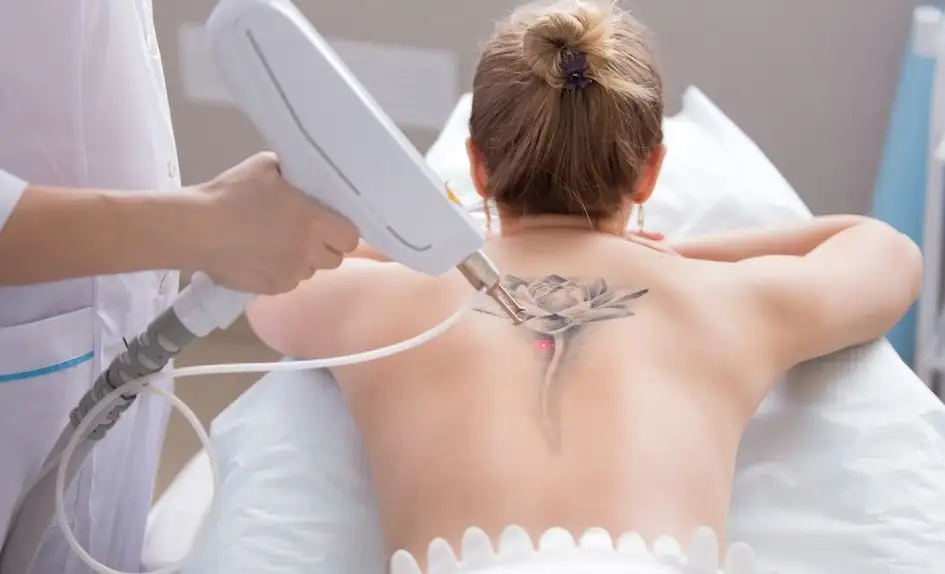What is Tattoo Removal?
Tattoo removal is a procedure to erase unwanted tattoos. Various methods include chemical peels, dermabrasion, surgical excision, and laser therapy. However, laser treatment is the most preferred, safest, and most effective method used today.
How Does Laser Tattoo Removal Work?
Tattoo ink contains large pigment particles embedded in the skin, which the body’s immune system cannot break down naturally.
Laser treatment delivers high-energy light beams that break these ink particles into tiny fragments, allowing the immune system to gradually remove them from the body.
Q-Switched lasers are considered the gold standard for safe and effective tattoo removal.
Who is a Good Candidate for Laser Tattoo Removal?
Almost all tattoos can be treated. However, darker ink colors like black and blue respond faster and better to laser sessions compared to lighter shades.
How is the Procedure Done?
The tattooed area is first numbed using a topical anesthetic cream for 30–40 minutes. After cleaning the skin with an antiseptic solution, the dermatologist sets the laser parameters according to the tattoo type and color. The laser is then carefully delivered in a uniform pattern to target the tattoo pigment. Mild swelling and redness may appear after the session, which is normal and can be soothed with ice compression.
Is the Procedure Painful?
Laser tattoo removal may cause mild discomfort, often described as a rubber band snapping against the skin. However, pain is significantly reduced by applying numbing medication before the session, making the treatment well-tolerated by most patients.
What should I expect during the recovery period?
After the procedure, mild redness and swelling may appear in the treated area for 2–3 days, which is completely normal. Your doctor may advise a soothing or healing cream to support skin recovery. Small crusts or scabs may form within a few days and naturally shed in about a week. It is important not to scratch or peel the crusts, as this can lead to scarring or pigmentation.
How many sessions are required for complete tattoo removal?
Laser tattoo removal typically requires multiple sessions to break ink particles into smaller fragments so the immune system can remove them naturally. The number of sessions may range from 1 to 10, depending on the tattoo’s size, colour, depth, and design. Darker inks like black and blue respond faster, while lighter colours may take longer and sometimes may not fade completely.
How frequently are the sessions done?
Laser sessions are usually scheduled 4–6 weeks apart, allowing the skin to heal properly and the body to clear fragmented ink effectively before the next treatment.


